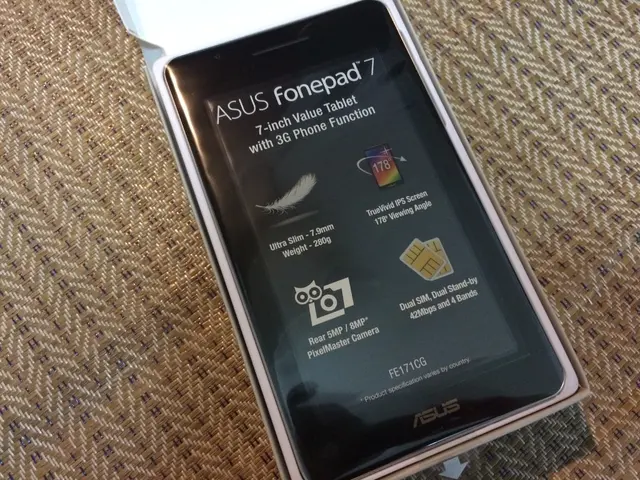Insider's Guide to MicroSD Express: Revolutionary Storage Expansion for Devices
Going Fast With MicroSD Express for Your Nintendo Switch 2
Got your hands on a shiny new Nintendo Switch 2? You're not alone, and with all those games and saves adding up, storage might be dwindling quicker than a certain green-clad plumber scoffs down pizza. If you find yourself in a pinch, you might've noticed your trusty SD card from the original Switch won't work anymore. That's because you need a MicroSD Express card for this console powerhouse.
Introduced in late 2023, MicroSD Express cards tickle the fancy with write speeds in the hundreds of megabytes. While they were once reserved for high-end digital cameras and niche use cases, their implementation with the Nintendo Switch 2 signals a more mainstream appeal. As with any new technology, however, the cards aren't exactly commonplace yet, and they bear a substantial price premium over regular MicroSD cards.
Before diving headfirst into the dollar bills, let's take a moment to talk shop—specifically about the difference between Express and standard MicroSD cards.
Of course, if you're in the know, you've probably already guessed the name doesn't lie—MicroSD Express cards are faster. But, to fully grasp the differences, we'll break down speed and how it's measured and displayed on MicroSD cards.
Normal, run-of-the-mill cards use three metrics, each overlaying the other in performance. These consist of Speed Class, denoted with a C, UHS Speed Class, marked by a U for Ultra High Speed Class, and Video Speed Class, accompanied by a V. No matter how it's displayed, the number denotes the card's ability to read and write at least that speed. For instance, a circle with a "10" inside signifies a 10MB/s sustained write speed. The U variants, 1 and 3, correspond to 10MB/s and 30MB/s, respectively, with cards typically compatible with slower devices, so you may notice multiple symbols and numbers on each card.
Express cards, though, feature a stylized EX or E, sometimes with a number next to it. This symbol is once again representative of the card's sustained write speed, with officially supported ranges from 150MB/s up to 600MB/s—and remember, these are minimum speeds, so you may find manufacturers touting even higher numbers. Capacity to support those speeds, however, depends on the device reading and writing to the card.
Looking for top-tier performance? MicroSD Express is the way to go for high-demand applications like gaming, where faster data transfer is vital. For example, the Nintendo Switch 2 supports MicroSD Express for enhanced performance. For regular use, however, standard MicroSD cards will suffice at a lower cost. But, with MicroSD Express making its way into the mainstream, don't be surprised if these new whizz-kids become more affordable and ubiquitous in the coming months and years. Toodles!
Extras: The Nitty-Gritty Details About MicroSD Cards
Speed Classes:- Normal MicroSD Cards: Speed Class denoted with a C, measures read and write speed.- UHS Speed Classes: U1, U3 correspond to 10MB/s and 30MB/s sustained write speeds, respectively.- Video Speed Classes: V6, V30, V60, and higher are suitable for video recording.- Express Speed Class: Indicated by "E" followed by a number, signifies Express Speed Class.
MicroSD Cards Interface and Speed:- Standard MicroSD Cards: UHS-I interface, speeds up to 104 MB/s; some models use UHS-II or UHS-III, reaching speeds up to 312 MB/s and 624 MB/s, respectively.- MicroSD Express Cards: Use PCIe and NVMe technology, reaching speeds up to 985 MB/s for MicroSD Express and 3,940 MB/s for full-sized SD Express cards.
Physical Compatibility and Cost:- Both types of cards are the same size, allowing them to fit into the same slots.- MicroSD Express cards require compatible hardware to reach their full speed potential and are generally more expensive than standard MicroSD cards.
- The Nintendo Switch 2, a console powerhouse, requires the faster MicroSD Express cards for optimal performance due to their write speeds in the hundreds of megabytes.
- Newsletters and technology enthusiasts might want to know that MicroSD Express cards, though more expensive, have wider applications beyond high-end digital cameras, with their implementation in mainstream devices like the Nintendo Switch 2 signaling a greater mainstream appeal.
- While gadget aficionados can anticipate a reduction in prices and increased availability for MicroSD Express cards in the future, smartphone users and casual consumers may still find standard MicroSD cards to be a more cost-effective solution for their storage needs.








